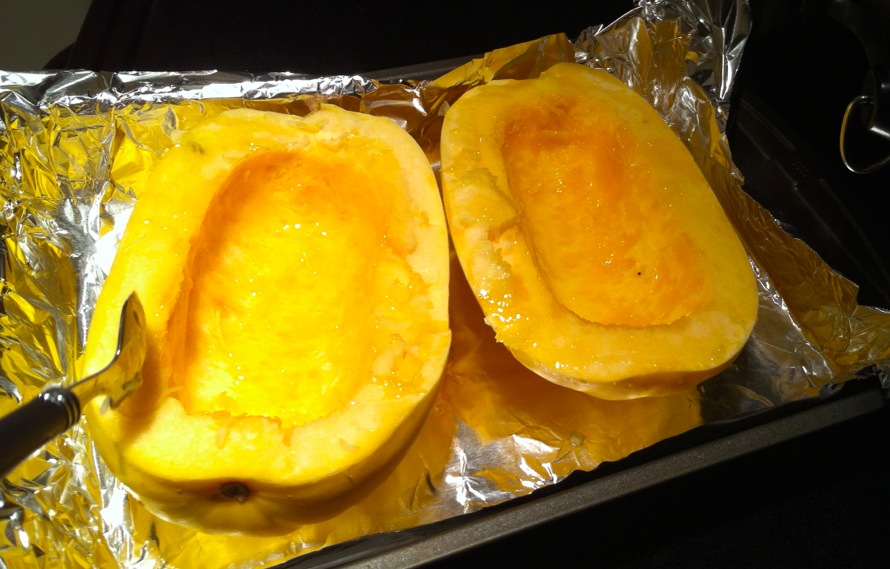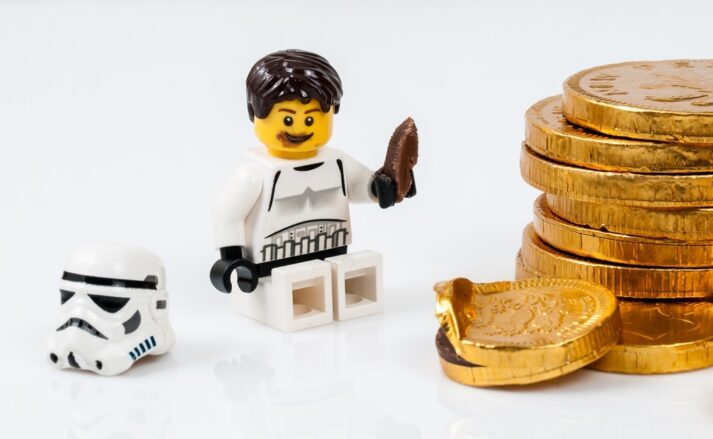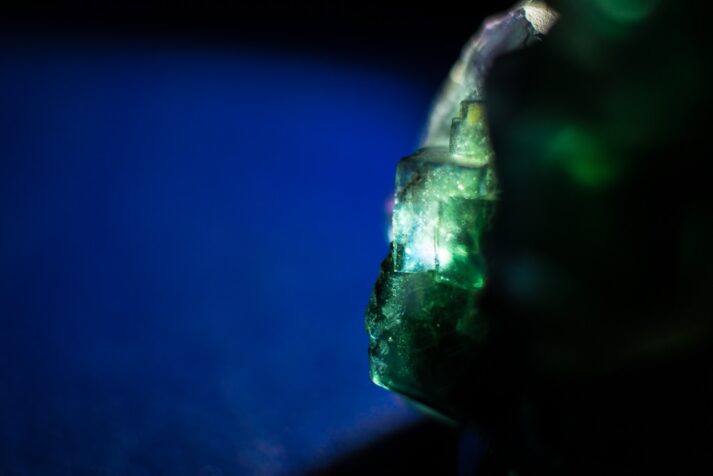How many calories do you burn while walking?
It’s a simple question, but it inevitably leads to a series of other questions too:
- Can I lose weight just by walking?
- Is there a right way to walk? How about a wrong way?
- How many calories do you burn walking a mile? A marathon?
- Can one simply walk into Mordor?
Okay, so maybe you didn’t ask that last question, but as a guy that runs Nerd Fitness, I certainly wanted to know the answer to that (spoiler: you can).
I’ll be addressing each of the above questions in this monster article about walking, including everything you need to know about the most natural activity we can do as human beings.
Walking is not only a great way to burn calories and stay active, but it’s an incredible stress reliever and gives you a chance to explore your surroundings in much more detail than through a car window.
For starters, YES, you absolutely can lose weight just by walking! Here’s a Nerd Fitness success story from Tim, who got hurt and could only walk for exercise.
50 pounds later (and another big change I’ll get to below), I’d say he succeeded!

But I’ll get to Tim’s story shortly. Instead, Let’s talk about the second question…
HOW MANY CALORIES Burned Walking?
In true Nerd Fitness fashion, we scienced the crap out of this, and even created a handy calculator for you – simply put your stats in the calculator here, and you can determine how effective walking can be when it comes to burning calories and losing weight!
What I thought would be a simple equation led me down a rabbit hole of labyrinthine proportions, but I feel we’ve found the best estimation as a starting point for discussion. [*].
So feel free to mess around with this calculator, and then keep reading so I can get you the information that will be helpful in your quest for health:
A few things to remember about the above equation:
There’s a difference between gross calories (total calories) expended and net calories (additional calories) expended! Your body burns most of its calories every day JUST by existing.
- Gross calories: calories burned while walking PLUS the calories burned just existing
- Net calories: ADDITIONAL calories you burned thanks to exercise.
You’re a unique snowflake, and no box or formula can capture your awesomeness/uniqueness. Fortunately this equation below is JUST a starting point!
ANY exercise pales in comparison to a much more important part of the weight loss equation. It’s what Tim did above, and what I’ll explain below!
If you’ve come this far, and you want to learn more about why walking is so amazing, continue reading. I’ll also tell you just how Tim had the dramatic success he had above.
And you’re damn right, I’ll show you exactly how to walk to Mordor too.
The Benefits of Walking

We are designed to walk. It’s in our DNA, and it’s a huge part of our emergence as the dominant species on this planet (along with opposable thumbs, big brains, and Nintendo).
Let’s get the basic stuff out of the way:
Every day, it’s recommended by the CDC that we walk around five miles, or 10,000 steps. Hence the reason why your Fitbit – which I’ll get to shortly – has that 10k step goal as its default number.
Unfortunately, we Americans tend to average HALF that: 2.5 miles or 5,000 steps. And I’d imagine that people who work outdoors or have more physically active jobs drag that average wayyyy up.
Which leaves us desk jockeys, who don’t walk nearly enough.
We use our feet to get us from the front door, to our car, to our desk, to the vending machine, to our car, to our front door, to our couch… where we put them up while watching four hours of TV before going to bed.
Not walking enough can be a big factor in the creep-up of weight gain over the years, and it’s probably why you’re here reading this article!
“Can I walk more to lose weight? Is walking REALLY good for me, or do I need to do more intense exercise?”
Long story short, you should walk more and it can help you lose weight and be healthier.
Short story long, here’s why walking is important:
Walking burns calories without exhausting you. If you walked the recommended mileage each day (5 miles instead of just 2.5), it can lead to a tremendous amount of weight loss over time. You’ll burn an extra 100 calories walking just ONE more mile each day than normal: When that’s multiplied out, it’s an extra 700 calories burned per week, which results in approximately a pound of fat lost every five weeks, or 10 pounds in a year. You can scale up your distances to get your desired results!
Walking doesn’t add to training stress. If you are strength training regularly, adding in more weight training or running can lead to burnout, breakdowns, and injuries. If you are trying to look like a super hero, extra cardio sessions (or long distance cardio sessions) will kill your gains. But you can just walk. You can walk great distances, provided you’ve built up your body’s physical ability, and not get tired or sore – walking (especially outside while soaking in some sunlight) can make you feel better, not worse.
Walking is low impact. Unlike running, which can wreak havoc on people’s joints if they run improperly or are severely overweight, walking doesn’t have those impact issues. If you go for a walk and your feet or joints hurt, you’re doing it wrong – read the next section!
Walking can burn fat. Because walking is low impact and low intensity, your body doesn’t need to pull from its glycogen and glucose stores to fuel itself, which happens when you strength train or push yourself into “aerobic training” with higher intensity cardio. Proponents of intermittent fasting suggest walking in a fasted state in the morning before eating anything in order to help burn extra fat. This will have to be something you attempt and measure for yourself.
Walking relieves stress. Seriously! When you put on your iPod with your favorite playlist, and can go for a pleasant walk around your neighborhood or through the woods as the sun is going down, you have a recipe to forget the worries of your day.
Walking improves mental health (especially in older hobbits). Walking can improve mental health, increase brain size, improve memory, and is correlated with improved, longer lifespans.[1]
How walking can change your life

If you are severely overweight and can’t run or strength train, walk on.
If you are building muscle and bulking up, walk on.
If you are trying to lose weight, walk on.
If you struggle with following a routine, or have failed in the past with weight loss, walk on.
Why? I’m a HUGE fan of small habit change and tiny victories – walking is the PERFECT habit builder. If you’re brand new and starting out, go for a walk TODAY and begin your journey to Mordor.
This afternoon, go for five-minute walk. Tomorrow morning before work, before breakfast, as SOON as you wake up, put on your shoes, and go outside for a five-minute walk. No snoozing, no lying in bed, no checking email or Twitter. Put on your headphones, pick your favorite song, go outside, and start walking.
Here’s why:
- Walking for just five minutes a day is the start of a new habit. Every morning for a few weeks, you’ll have to force yourself to walk. Initially, it will take effort and willpower to walk instead of snoozing. However, with each passing day of success, you’ll need to use less effort and willpower to get out the door. After all, it’s only five minutes, right? Once it’s something you do automatically without thinking, you can add on to it by increasing your walk time.
- Walking briskly outdoors in the fresh morning air can be a great caffeine-free wake up call! If you make walking the FIRST thing you do in the morning, especially if you’re doing it before anybody else is awake, there will be zero distractions and no reason to say “sorry, I didn’t have time.” Of course, we like caffeine too (in moderation).
- Walking will give you a chance to gather your thoughts and clear your head before the day begins. We’re constantly distracted at home: TV, iPads, smartphones, etc. Walking is so primal – no gadgets, just walking. Many people cite walking as the impetus for their creative or intelligent breakthroughs.
- Walking and successfully building a habit will give you a habit blueprint to follow for anything else you’d like to accomplish: “Hey, I was able to make walking a habit, what else can I tackle in the same way?” Slow and steady wins. One foot in front of the other, my friend.
How to walk properly

“Uhhh, Steve, I know how to walk. I do it every day!”
Welp, if you’re starting from only walking from your car to the office, we need to make sure you’re walking the right way for when you push that mileage up.
Let’s start with your feet, provided you’re not gonna glue hair to your feet and go barefoot to become a hobbit.
I recommend walking in shoes that have a a wide toe box and minimal drop (height at the heel vs height at the toes), as we discuss in our monster post on healthy feet and footwear:
- Low profile shoes like those from Vivo barefoot.
- I trained in Vibrams for years.
- Now I train in Merrell Vapor Glove 3s.
You might not be used to walking with minimal cushioning under your heels, so walk slowly and land softly. Walking on softer surfaces to start isn’t a bad idea either.
What about those “tone up shoes?” Will they make your booty pop like it says in the ad? This won’t be a surprise to you, but those shoes are about as likely to improve your health as Gimli shaving his beard (not likely).
We were designed before the invention of big clunky shoes… thus, we should be able to walk without big clunky shoes. If you are interested in going barefoot as a runner, get started by walking short distances first. Your feet will toughen up (though they probably won’t grow hair quite like Frodo and Sam), your joints and muscles around your feet and ankles will strengthen, and your knees will deal with less stress.
When going for a lazy stroll, focus on landing softly, which is much easier when you don’t have thick soled shoes to cushion your stride: land softly with your heel barely touching before rolling onto the middle (ball) of your foot, and then push off. You might need to take shorter strides than you’re used to if you were a big heel striker with a long stride.
If you’re aiming to walk quickly and up the intensity, shorten your stride and aim to land in the middle of your foot while pumping your arms. This is more easily done when walking uphill (which is also a great way to burn extra calories).
Walking To Lose Weight

Meet Tim, a regular nerd like you who found Nerd Fitness a few years back and walked his way healthy.
Case closed? Of course not!
There’s more to that story – although it makes for a great headline, we need to set the record straight on walking and exercise in general when it comes to losing weight and getting healthy.
The NF Community asked Tim what he thought about his transformation looking back at himself after 7 months [2]:
“If you’d told me I could lose 50 pounds in 7 months with just changing my diet and walking, I would have told you to take a long walk off a short pier! I can hardly believe it myself.”
So what happened?
Before he could really get started on his weight loss journey, he managed to injure himself and was told by his doctor that he couldn’t do any strenuous exercise or strength training for at least 6 months.
Tim also joined our comprehensive flagship digital course, The Nerd Fitness Academy, and following the mindset and nutrition modules. Tim took the MOST important step one can take when it comes to walking your way healthy:
He went for walks, he fixed his mentality, and he fixed his nutrition!
One of the Rules of the Nerd Fitness Rebellion is that we know “you can’t outrun your fork.” No amount of exercise can counter a bad diet, as your nutrition will be responsible for 90% (not an exaggeration) of your success or failure.
Here’s an example: Let’s say you go for a 5-mile walk, which takes you 90+ minutes. If you then consume a 20 oz Gatorade and a small bag of Fritos (a typical snack for many here in America), you will have already undone all of the calories burned while walking.
Depending on your nutrition and love/hatred for exercise, this is either great news or bad news!
The BAD news: you can’t eat very badly in mass quantities and then expect to lose weight with a bit of exercise every week, even if it’s strenuous.
The GOOD news: Even if you dislike exercise, you can avoid exercise and still lose weight (like Tim)! Instead, put ALL of your focus instead on fixing your nutrition, and then go for a walk every once in awhile.
I’d also consider reading the following:
If your nutrition is in serious need of an overhaul, I hear ya! It can be overwhelming. In addition to the Academy, we created a free PDF and a whole 10-level nutrition system to make the process of fixing your diet more like a video game:
- Follow our 10-level nutrition system at your own pace
- What you need to know about weight loss and healthy eating
- 3 Simple rules we follow every day to stay on target
Walking tips and tricks

Focus on posture! Head up! Shoulders back! Walk with a confident stroll – practice this one in the morning if you’re not used to walking like this. It’s also a great way to appear instantly more confident; we nerds and hobbits need all the confidence we can get! Look around at your surroundings with your head up, arms swinging in rhythm.
Walk uphill to burn more fat. If you are walking on a treadmill, set it to an incline to increase the intensity and thus increase the amount of fat burned. Just don’t be that person who sets the incline way up, then holds onto both sides and leans their body back to be perpendicular with the incline. Keep good posture, lean forward into the incline, shorten your stride, and pump your legs.
Hiking is a great way to practice walking, enjoy the scenery, and play Lord of the Rings in the woods with plastic swords and capes. Not that you should do that (you totally should). Here’s a beginner’s guide to hiking!
When walking downhill, especially while barefoot (or wearing minimalist shoes), keep that stride short and be careful on how you are walking. Make sure your knee is bent when you land and absorb the impact rather than jamming the impact through your heel, knee, leg, hips, and lower back.
Consider going for fasted walks in the morning. When you wake up first thing in the morning, your body has burned through most of the carb-fueled energy stores during the night. Which means when you go for a walk first thing in the morning, your body is more likely to have to pull from the only fuel source available to it: fat! This is the entire philosophy behind things like Intermittent Fasting or really low-carb diets like the Ketogenic diet.
Get yourself a sturdy walking stick, if only so you can use it to battle imaginary ogres, goblins, cavetrolls, etc. It can also make you feel far more adventurous than if you’re just walking, and help you get up hills and land softly when going back down.
Try Temptation Bundling. Load up an audiobook or your favorite podcast, and tell yourself that you can ONLY listen to the book or podcast while walking.
What about Fitbits and Nike FuelBands and Apple Watches?
![]()
If you’re somebody who has been interested – or is getting interested – in walking, you’re probably familiar with step-tracking devices that are oh-so-popular these days:
- Fitbit (I wear a simple Fitbit Flex 2).
- Nike Fuelbands.
- Apple Watch
Personally, I’m a huge fan of fitness wearables, but not for the reasons you’d think.
For starters, you’re wearing a constant reminder that you are prioritizing movement, which can only be positive. You can even trigger it to remind you to get up and move every hour. It can also allow you to see how many steps you normally take, and thus allow you to prioritize moving MORE.
Although Fitbit was involved in a lawsuit for the inaccurate heart-monitor portion of its devices, I’m less concerned about heart rates and 100% accuracy of step distance, and instead think in terms of personal improvement.
Just like with tracking your bodyfat percentage or your weight, “that which gets measured gets improved,” and that carries over to your total steps. The fact that you’re tracking it means you’re going to be more aware of it, which means you’re going to be more likely to be able to improve it.
And that’s why, in a weird way, I’m not very concerned about the total accuracy of these devices. Even if your scale is off by 5 pounds, or your body fat caliper is inaccurate by 1%, as long as you use the same device and measure in the same way under the same conditions, you can track trends and paint the picture of your health and whether or not it’s improving!
And that’s what these fitness trackers should be used for: a reminder and a trend tracker!
What you SHOULDN’T do: take your fitness tracker as gospel, and use that to calculate down to the calorie and macro how much food exactly you can consume.
What you SHOULD do: track your trend over time, and see if you can improve your average. Use the technology to aid your fitness quest. Use the community portion of the band to compare your stats against friends and get some positive friendly peer pressure to get you off your ass.
Okay, if nerdy fitness technology isn’t nerdy enough for you, let’s go full-nerd.
How to Actually Walk to Mordor

Did you know it’s 1779 miles between Hobbiton to Mount Doom? [3][[Thanks to EowynChallenge.net for this crazy amount of work[[3]]. We can actually determine how far Sam and Frodo walked, and then set out on the journey ourselves! It’s one thing to go for a stroll around your neighborhood. It’s another to know that, “If I take one more step, it’ll be the farthest away from home I’ve ever been.”
So let’s take a look at how far we need to walk first:
- 458 miles: Go from Hobbiton to Rivendell.
- 462 miles: Set out with the Fellowship from Rivendell, through Moria, to Lothlorien.
- 389 miles: From Lothlorien, down the Anduin, to Rauros Falls.
- 470 miles: Follow Frodo and Sam on the quest from Rauros to Mt. Doom.
- 535 miles: From Minas Tirith to Isengard
- 693 miles: From Isengard to Rivendell.
- 397 miles: From Rivendell to Bag End.
- 467 miles: (bonus!) Follow Frodo to the Grey Havens and return home with Sam.
Following this path, you need to walk a total of 1779 miles to get from Hobbiton to Mt. Doom. Then it’s time to destroy the ring and get carried to Minas Tirith by the Great Eagles. Then you’ll walk 1625 miles back to Bag End (and an additional 467 miles if you’re interested in doing a round trip to the Grey Havens).
Obviously, you don’t need to move at the same speed as the hobbits (18 miles in the first day is no joke! Damn, those hobbits covered some ground!), but it’s still fun to track your walks and your total miles to see where you’d be on your journey.
However, like Frodo and Sam, it starts with the first step.
I’ve created a google doc that you can copy for yourself to track your distances to follow Frodo and Sam on your journey to destroy the One Ring.
Here’s how to do it:
- Open the document, and then click on “file,” “save a copy,” and then you can edit your own copy of the document.
- Track your distances with a pedometer, FitBit, your iPhone or Android phone.
- Input your distances and work towards completing each section of the journey over months. As you input your distances, it will automatically let you know when you reach each destination so you can get you started on the next one. 5 miles a day on average will have you destroying the Ring within one year.
Oh, and if you’re curious, according to my rough gorilla math, Frodo burned at least an additional 61,0000+ calories (100,000+ gross calories) by walking “there and back again” – you’re welcome[*].
What questions do you have about walking?
How have you incorporated it into your daily routine?
And have you walked to Mordor?
-Steve
Photo source: fourbrickstall Hiking in Candelario, Lego Frodo, Stewart Baird: Stay on the Path, lothlorien tree, new zealand mountains, Simonds Footprint@PierCove, endless fields, Thad Zajdowicz Keep walking! HMM!, waterfall, Frodo and Sam,
source https://www.nerdfitness.com/blog/walking/













































